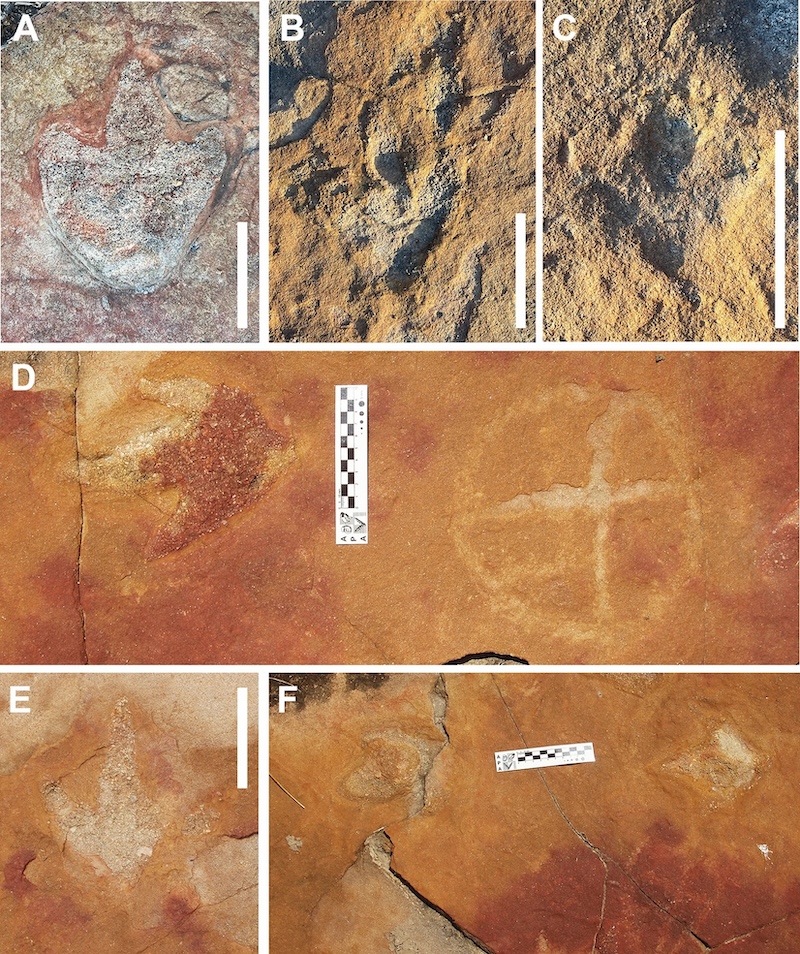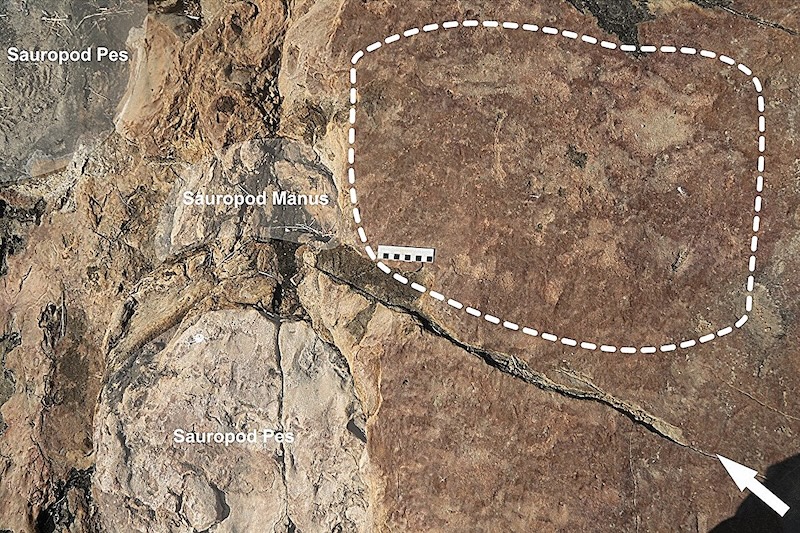A team of archaeologists and paleontologists studied petroglyphs made between 3,000 and 9,000 years ago in what is now Brazil.
The research team was working in an area called Serrote do Letreiro, a rural region in eastern Brazil. Previous studies had shown that the area was ideal for preserving dinosaur footprints, even though very few bones had been found there. The absence of bones made it difficult to determine which species of dinosaurs made the footprints.
The footprints date back to 40 million years ago and the researchers found that they represent ornithopods, theropods and sauropod dinosaurs.
In this new study, the research team found what they describe as “a remarkable collection of petroglyphs and dinosaur footprints”. The team says there are very few examples of the two together at the same excavation site.
“Although the proximity of fossil and rock art formations has been found before, a site where they are literally side by side has never been identified,” the researchers said.

The team also found a close relationship between petroglyphs and dinosaur footprints. This suggests that the art created by local people thousands of years ago was probably inspired by the footprints.
The researchers suggest that this relationship is evident because of the large number of carvings near the footprints, showing that the artists were aware of them. It also shows that ancient peoples in the region were aware of and valued ancient fossils.
According to experts, it is possible that the footprints became part of the rituals or ceremonies of these ancient people. People who lived in the area thousands of years ago would have chosen the place to display their artwork specifically because of the presence of the footprints.
The researchers also suggest that the petroglyphs point to the possibility that the artists who created them were using hallucinogens because of their similarity to visions commonly reported by people who used such drugs in the modern era.
Troiano, L.P., dos Santos, H.B., Aureliano, T. et al. (2024). A remarkable assemblage of petroglyphs and dinosaur footprints in Northeast Brazil. Sci Rep 14, 6528.





